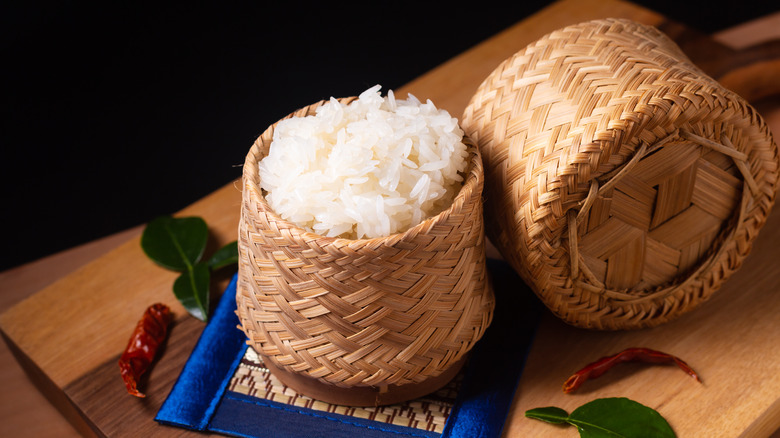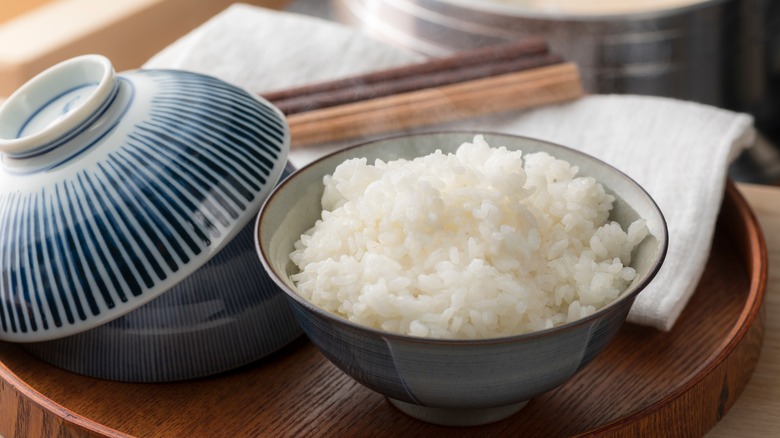Don't Be Fooled, Glutinous Rice Is Actually Gluten Free
There are over 120,000 varieties of rice in the world, ranging in color, grain length, and a variety of other factors. While there's evidence of humans eating rice as far back as 8000 BC, it's highly debated as to when our ancestors started to domesticate the grain. In the roughly ten thousand years since then, however, rice has become a staple in cultures all over the world.
One prominent strain of the world's most-grown food crop is sticky rice. Also known as sweet rice, glutinous rice or by its scientific name, Oryza Sativa Glutinosa, sticky rice is the key ingredient in beloved dishes and culinary traditions, such as sushi or Thai-style sticky rice. It's also the national dish of Laos, where the average citizen eats roughly 345 pounds of sticky rice per year. This specific strain of rice has been growing in Southeast Asia for at least 4,000 years.
Glutinous rice stands out compared to other strains like Basmati or Jasmine rice thanks to its sticky texture that allows it to be molded into pieces or shapes for functions like dipping into a sauce, picking up other foods similar to bread, or making dumpling-like rice balls such as onigiri.
Does glutinous rice contain gluten?
Contrary to its name, glutinous rice doesn't actually have gluten in it. Instead, sticky rice gets its name from its sticky glue-like (or glutinous) texture that helps it clump together (via Huff Post). So if you're avoiding gluten for health-related reasons, you can rest easy eating sticky rice-based dishes. Glutinous rice doesn't actually have gluten in it but, what makes it so sticky?
To be considered sticky rice (and to actually be sticky) the rice needs to meet a few conditions. First, it needs to be high in amylopectin — which makes the rice sticky — and low in amylose. These two molecules are the building blocks of all starches. Glutinous rice contains 1-2% amylose and 99-98% amylopectin, while non-glutinous rice, like Basmati, might contain a much higher concentration of amylose. Sticky rice is also high in dextrin and maltose, which are formed when starch comes into contact with water.
While you might expect all glutinous rice to be short grain, as that's the most common strain you'll find in the United States, any length of rice grain can be sticky as long as it meets the criteria above. Despite its popularity, good sticky rice can be hard to get right. Here are some mistakes to avoid when making sticky rice.

